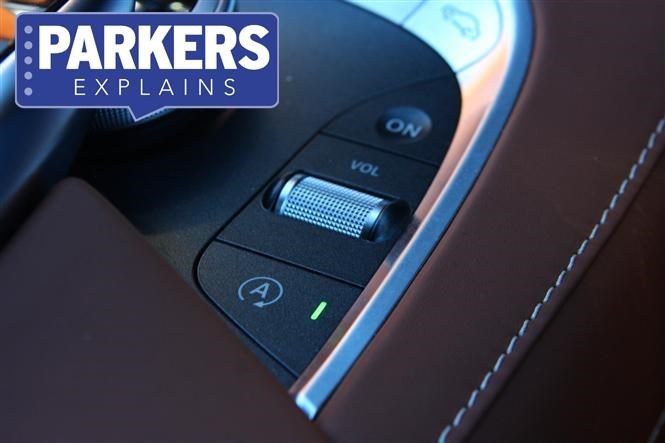An engine equipped with stop-start can temporarily shut down when you’re stationary and not using it, such as when queueing in traffic, and then quickly restarting before you need to move away.
How does stop-start work?
First of all the system relies on the engine being at optimum temperature before it will work. This is to ensure all the moving parts are properly lubricated for stopping and restarting. For that reason you might not notice it working at all during the first initial miles of your journey – especially on a cold winter’s morning.
Then it depends largely on what type of gearbox your car has. In a car with a manual gearbox, the engine usually stops when it is stationary, out of gear and with the clutch pedal up.
With an automatic gearbox, the car will shut down its engine after you come to a halt with the brake pedal depressed. When you take your foot off the brake pedal again, the engine will quickly fire back up.
Because the engine is usually off for a short time, auxiliary functions such as the radio and air-conditioning will still work, even before it restarts. However, if you find yourself stationary for too long the car may start the engine to maintain power. For the same reason, moving the steering wheel or switching on a heated windscreen can sometimes cause the motor to turn over.
You can turn the stop-start system off altogether by using a button on the dashboard or near the steering wheel if you find it irritating.
Do I need stop start?
Because you are using the engine for less time overall, cars with stop-start have lower claimed fuel consumption and CO2 emissions than those without. Kia, for example, reckons its Intelligent Stop and Go engines use 12 percent less fuel than standard ones without.
More to the point, as the technology improves and becomes cheaper to install, you’ll find it harder and harder to find a car without stop-start fitted.
Does my car have stop-start?
Stop start features on a huge range of petrol and diesel engines in the automotive alphabet from Alfa Romeo to Volvo. It’s even found its way into supercars from Ferrari (called HELE – for High Emotion, Low Emissions) and McLaren.
Also known as
Various grammatical variations of stop-start, such as stop start and stop/start, plus manufacturer names like Intelligent Stop and Go, i-Stop, or even Eco.
Looking for more jargon-busting motoring meanings? Head over to our Parkers Car Glossary page and take a look at our other definitions.
Just so you know, we may receive a commission or other compensation from the links on this website - read why you should trust us.




